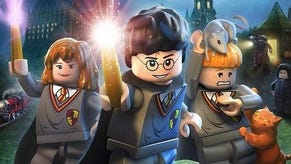LEGO Harry Potter: Years 1-4
A kind of magic.
LEGO Harry Potter is enormous, which is no mean feat given that the title character is two centimetres tall. And plastic.
By the time I finished the sizeable story mode, encompassing the first four years of Harry's life at Hogwarts, I'd put more hours on the game clock than most "adult" action games demand, yet I was still at just over 45 per cent completion. I'd not completed any of the Hogwarts crests hidden in each of the levels. I'd unlocked a fraction of the game's 160-plus characters. I'd found only six of the secret red power bricks, rescued a mere 20 of the 50 imperilled students and earned less than half of the golden bricks which add up to unlock more bonus levels.
So, for a game built from tiny pieces, LEGO Harry Potter builds into a seriously epic undertaking. This has been true of all the LEGO games, of course, but this is by far the most impressive and most rewarding iteration of the beloved formula to date.
The basics are much as they were for LEGO Star Wars five years ago. You explore, smash things, build things and earn shiny LEGO studs that can be cashed in to unlock even more content. Famous scenes from the stories are re-enacted in irreverent style, and you swap between characters to make use of their unique abilities.
To some adult observers, this unchanging bedrock represents a series in stagnation. To the kids who flock to these games, it's comforting, familiar and provides a dependable springboard for the ever-evolving challenges that each game asks of them. As with all the best franchises, the key gameplay elements have endured for a reason.

To criticise this game for adhering to formula would be a mistake, since the structure now built on top of these reliable foundations is ambitious and daunting, and part of the reason for that lies in the distinct properties of the Harry Potter saga.
Unlike Star Wars, Batman or Indiana Jones, Harry's adventures don't take him around the world, across a city or to other planets. Pretty much everything that happens to him happens in Hogwarts. Rather than allow this restriction to hold things back, TT Games has instead turned it to the game's advantage.
You no longer retreat to a hub area and dip into key set-pieces one by one. Instead, Hogwarts is a gigantic, continuous gameplay area full of living detail. When it's Christmas in the story, everyone wears Santa hats. When the Dementors arrive, looking for Sirius Black, students huddle in corners, terrified. When Gilderoy Lockhart arrives at the school, gaggles of cooing girls follow him around. It's lovely and hilarious.
For the vast majority of the game, you'll be traversing the staircases, corridors and courtyards, triggering story levels as you go, and learning new spells in lessons along the way. Navigating this imposing environment is never a chore, as the house ghosts are on hand to lead you to the start of the next story mission, leaving a trail of translucent studs as a marker just in case you get distracted by yet another intriguing detail and wander off to explore again.

It gives the story mode a seamless feel, since you're never taken out of the game world, while also offering dozens of chances to try out each of your spells and abilities by interacting with secondary puzzles tucked away all over this sprawling location. Pixies, for example, can be found messing with scenery items. Learn the spell that freezes and shatters these pests, and those scenery items will form part of another task that might earn you another character, golden brick or just a lovely shower of studs.
In fact, one of the great things about all the LEGO games, but especially Harry Potter, is that everything does something. There's always some item to blast or levitate or twist, and the result is always useful, funny, or both. Remember how on school trips, the best bits of the museum were the exhibits that had buttons to press and models that moved? TT Games understands that need to fiddle, prod and simply make stuff happen. The developers never let their young audience get bored and the procession of well-placed background gags goes a long way to keeping these neophyte players engaged.










